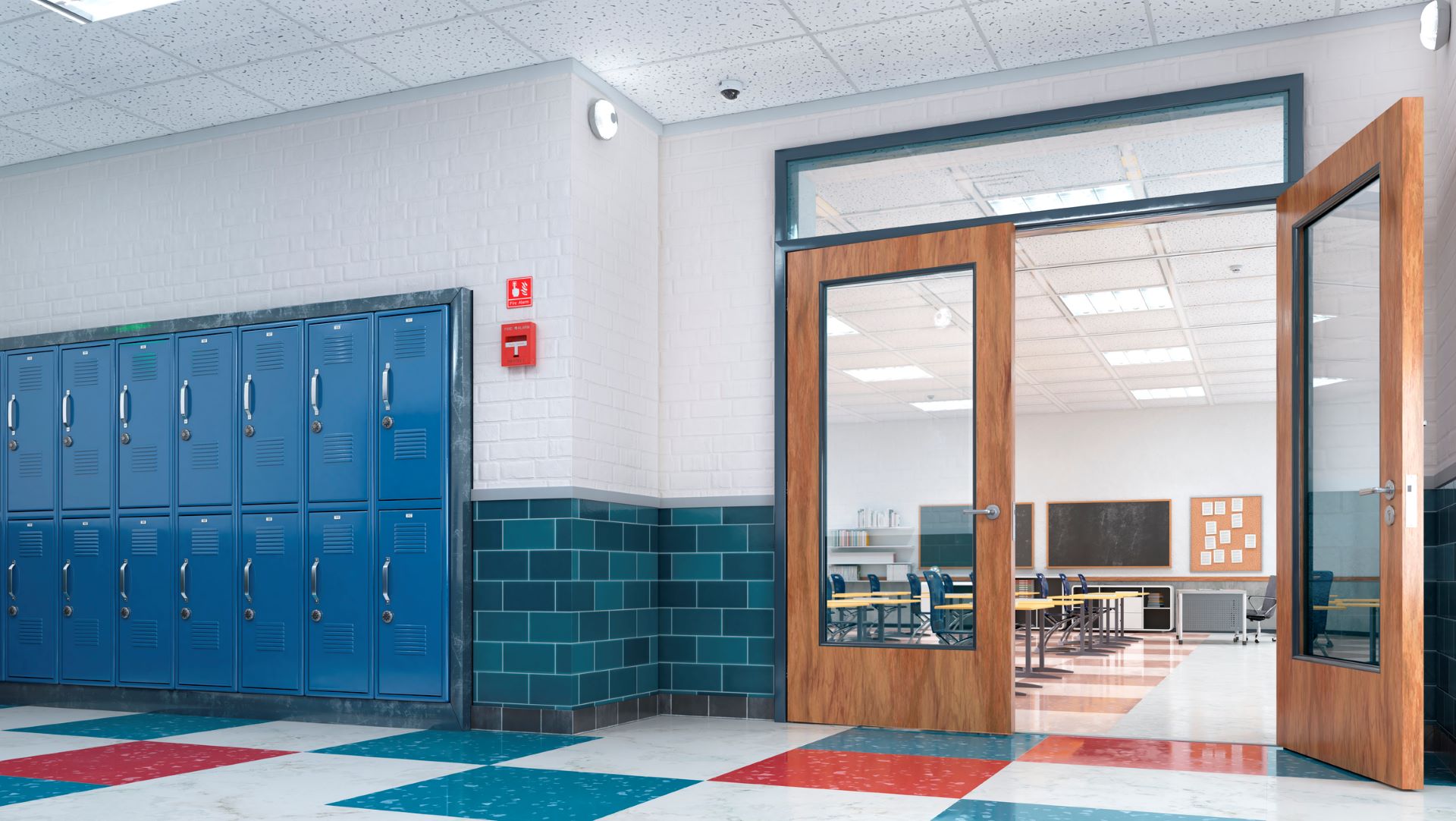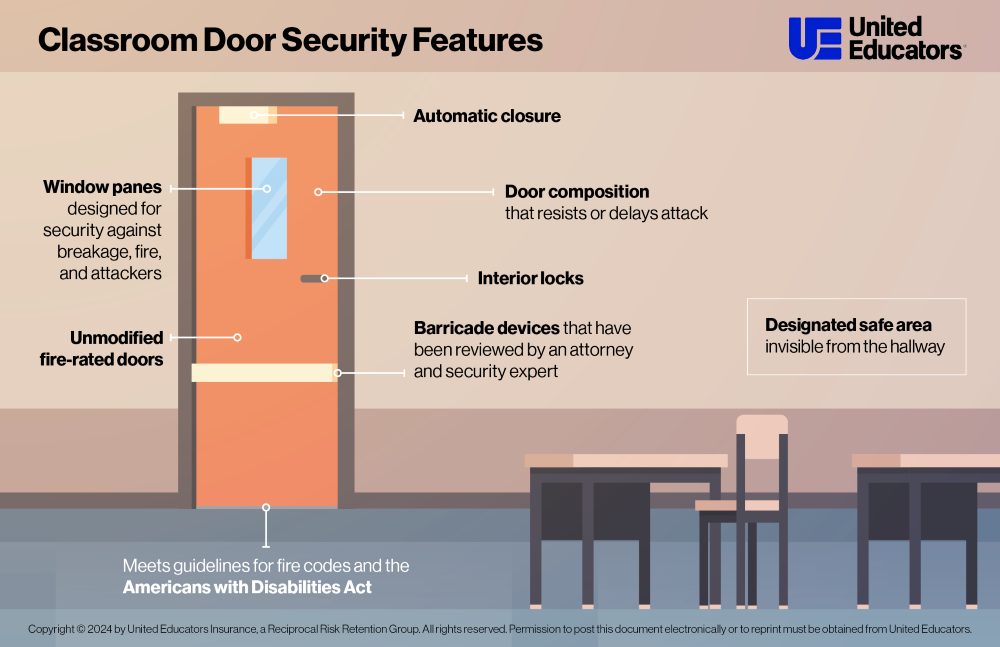Secure Classroom Doors to Stop Active Shooters

To help prevent school shootings, your K-12 school may examine the security of its classrooms and doors. Follow the considerations and practices below to help your school best secure its doors in a potential active shooter situation.

Graphic of a door, with classroom door security features next to relevant spots on the door.
Offer an Interior Locking Option
Doors that lock from inside are most effective in securing a classroom, according to a 2015 report by the Sandy Hook Advisory Commission. Exterior locking doors may put teachers or others in the path of an active shooter by requiring them to go into the hallway to lock the door. In the February 2018 shootings at Marjory Stoneman Douglas High School, teachers were injured or killed while trying to lock their classroom doors from the outside.
Even if doors have interior locks, they should be accessible from the outside to administrators and emergency personnel. Provide these individuals with keys or an exterior access method.
Consult Experts About Barricades
Barricades can effectively secure classroom doors, but most don’t comply with state and local fire codes. From rubber doorstops to an industrial grade security device designed specifically for a school door, the complexity and cost of barricades are wide-ranging. Consult with an attorney and security expert before buying these devices.
Secure Doors That Have Windows
For doors with windows, provide a covering to obstruct a shooter’s view into a classroom. Temporary coverings are preferable because permanent classroom privacy may increase the risk of sexual molestation, which occurs more often than shootings.
Review the placement of windows on or near doors because active shooters might fire through glass to gain entry. Consider making glass doors and windows shatter- and bullet-resistant. If possible, install classroom doors made of bulletproof materials.
Comply With Codes and Requirements
Identify and comply with applicable building and fire codes, life safety codes, laws, regulations, and other requirements. Use the National Association of State Fire Marshals’ (NASFM) checklist of best practices for classroom door security. It’s based on building codes, life safety codes, fire codes, and federal laws.
Engage Internal and External Security Experts
When securing doors, seek guidance from staff members with security and liability expertise.
Also consider contacting an outside security expert to review your approach to securing doors and your school’s overall physical security. A fresh perspective can identify gaps.
Document Your Process
Once your school decides how it will secure doors, consult with counsel about the best way to document your school’s thought process. That documentation can be important in showing your school acted reasonably if a related claim arises.
Additional Resources
About the Author
-

Alyssa Keehan, Esq., CPCU, ARM
Director of Risk Management Research & Consulting
Alyssa oversees the development of UE’s risk management content and consulting initiatives, ensuring reliable and trustworthy guidance for our members. Her areas of expertise include campus sexual misconduct, Title IX, threat assessment, campus security, contracts, and risk transfer. She previously handled UE liability claims and held positions in the fields of education and insurance.





